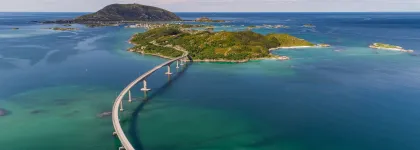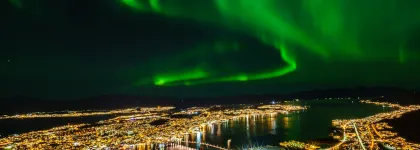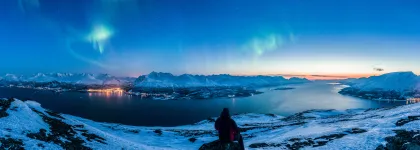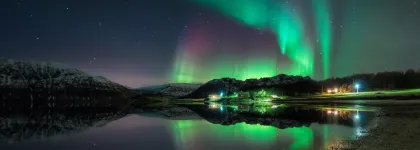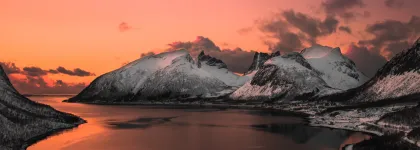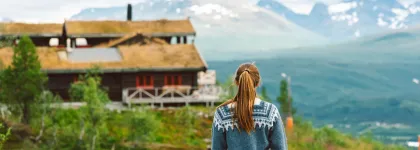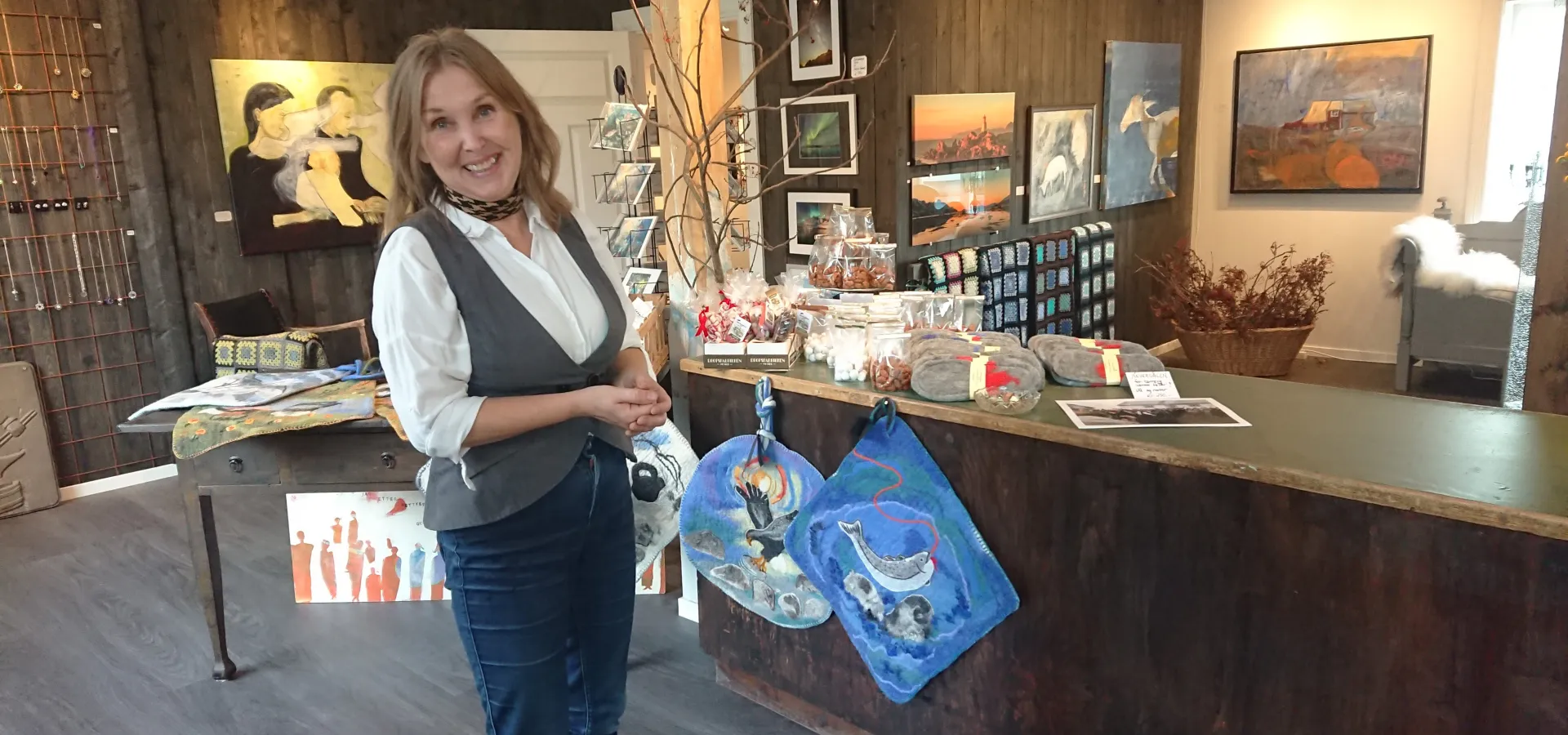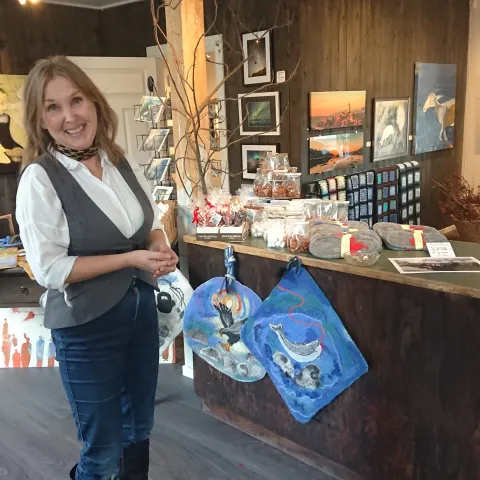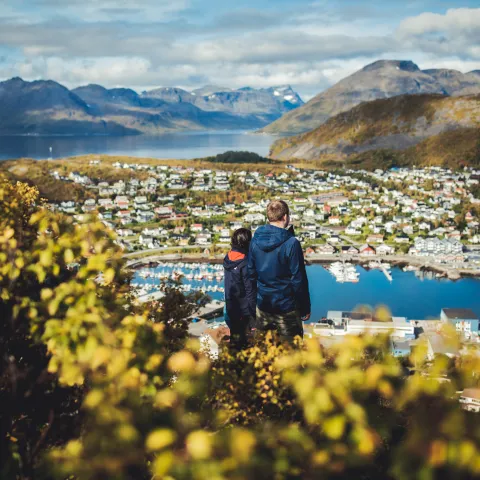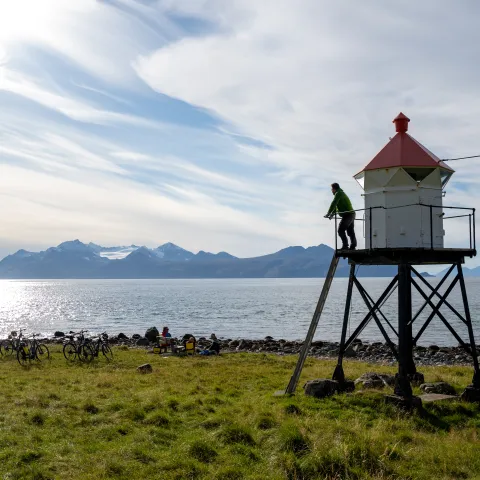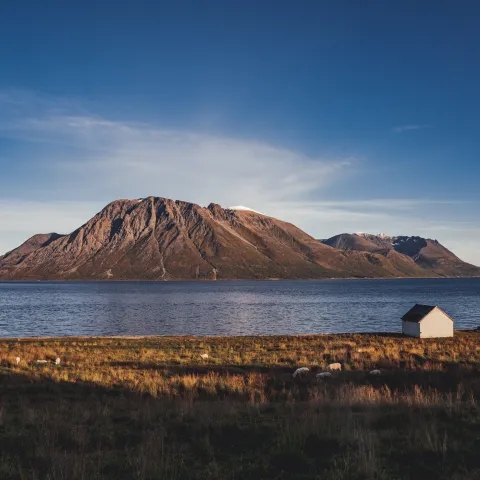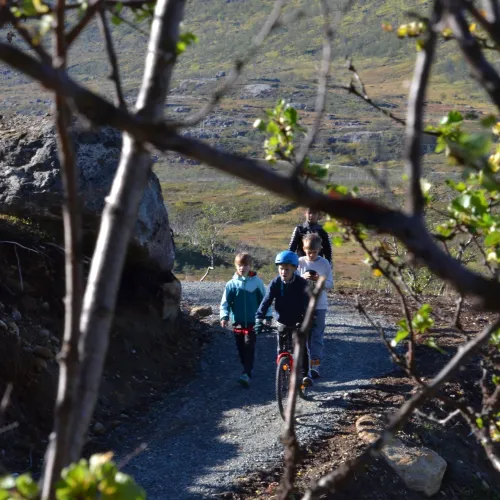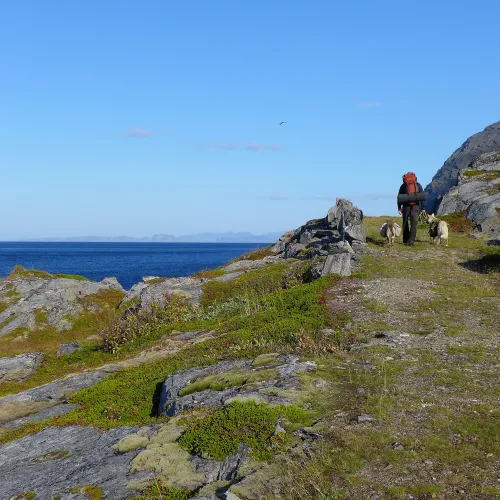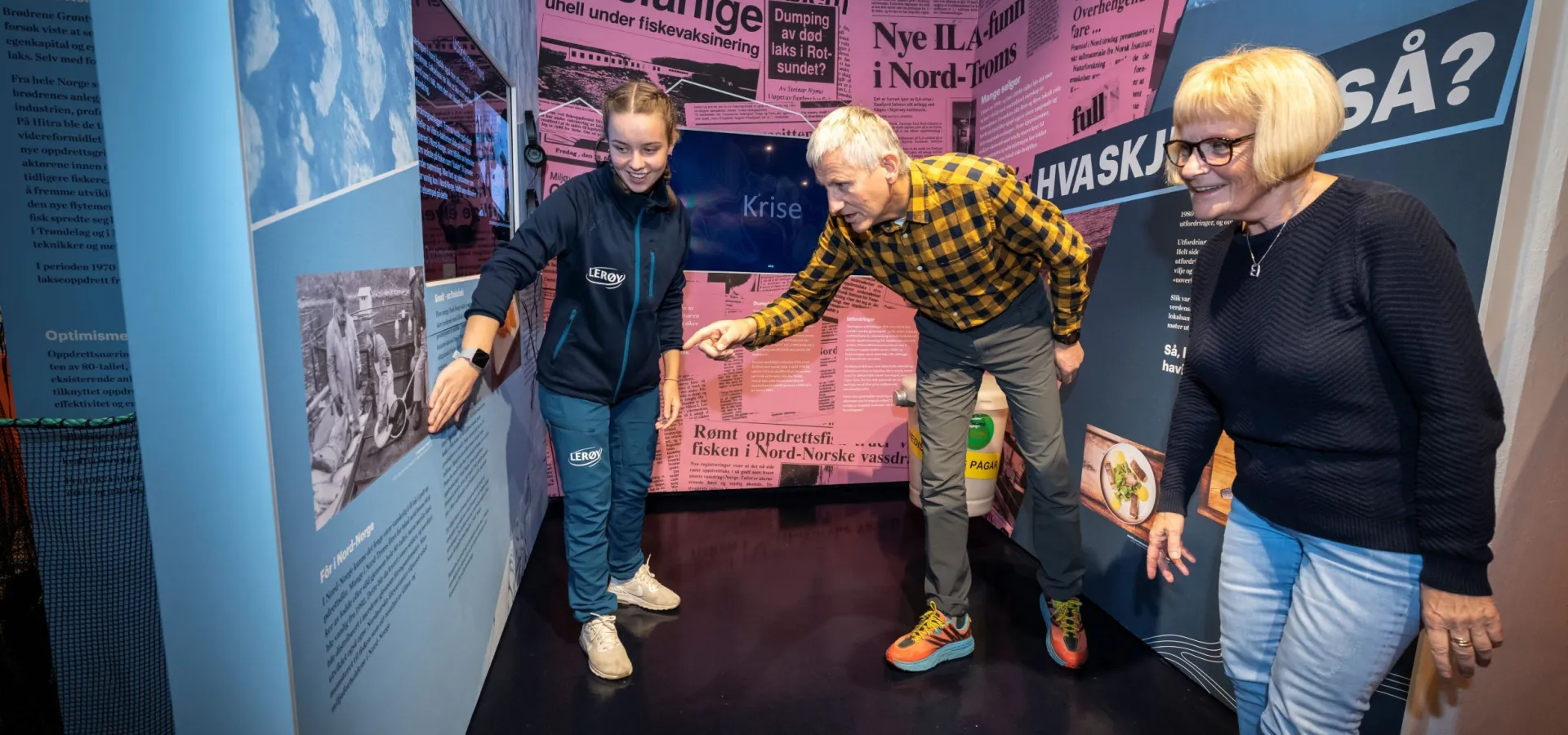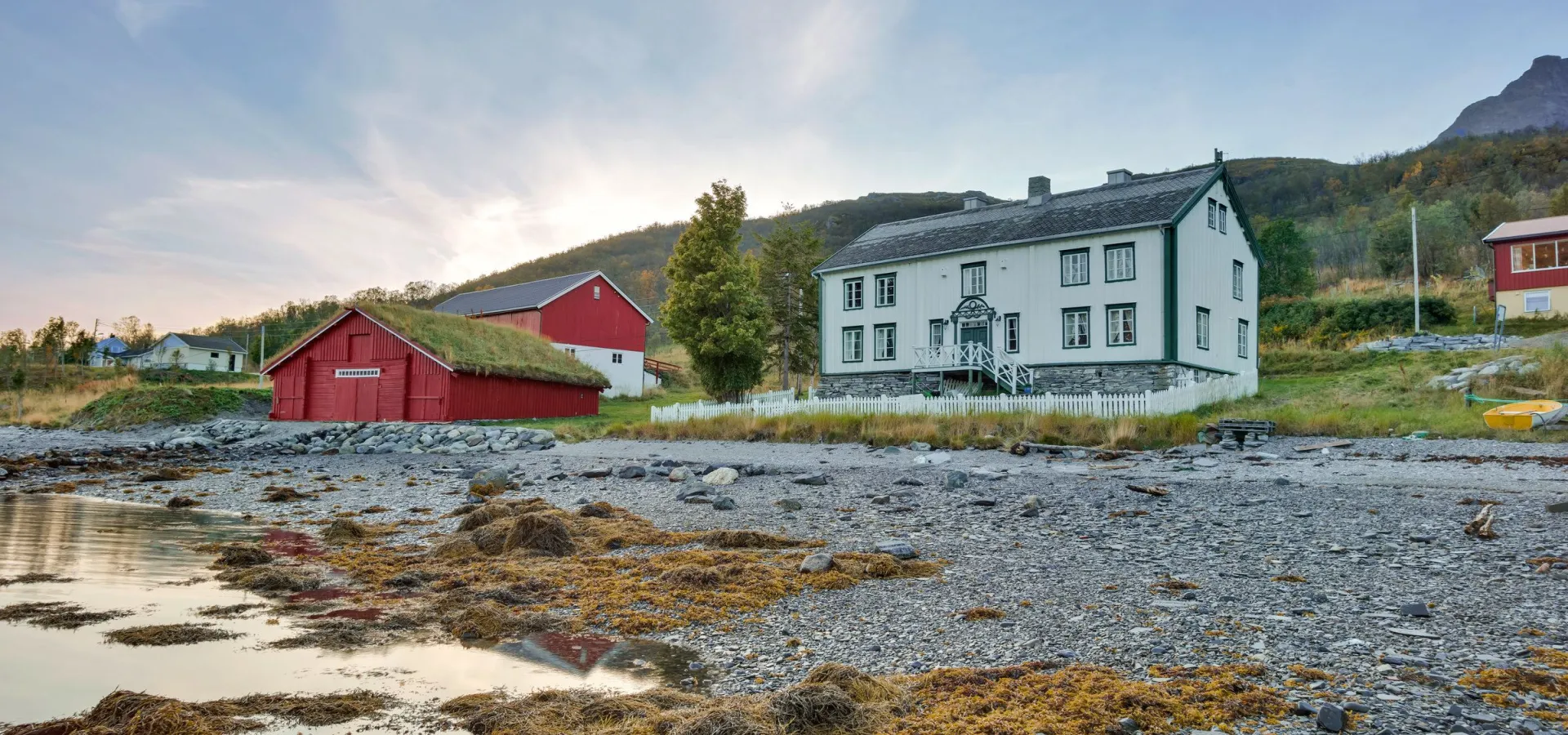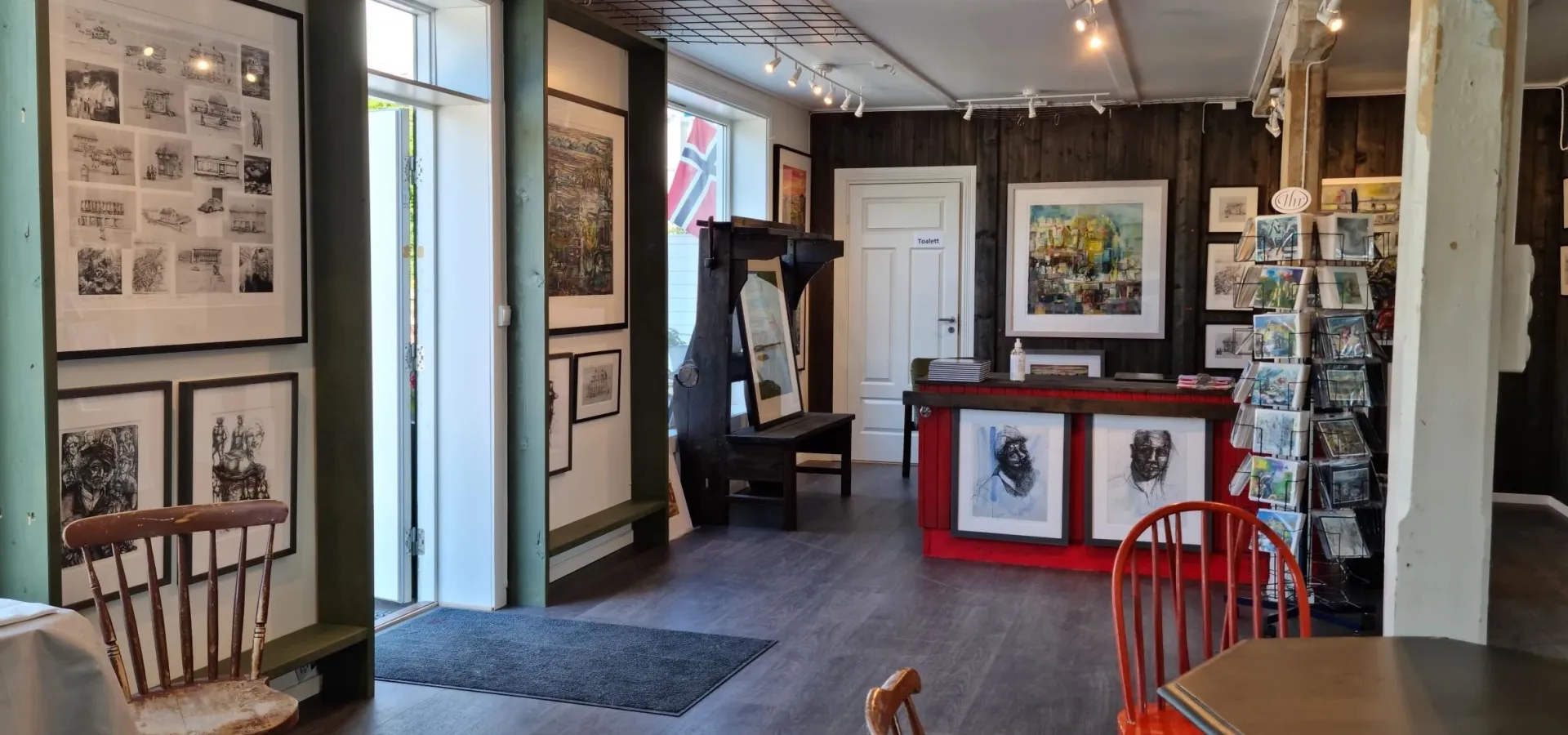Cultural heritage in Skjervøy Municipality
The "meeting of the three tribes"
The “meeting of the three tribes” has characterized the area around the Lyngenfjord and indicates the interaction between the Kven, Sami and Norwegian people in our historical and cultural basis. This has had a strong influence on the place names, language, traditions and the way of life.
Coastal fort at Engnes
For those interested in history, it is possible to seek out ruins of the coastal fort that was built and established there by the Germans during WW2. There you will find tunnels, gun emplacements and trenches. Engnes was a strategic place in terms of keeping an eye out for shipping both south and north. It was Russian prisoners of war who built both the road and the coastal fort. When the Germans withdrew from North Troms, the coastal fort was blown to pieces, leaving only ruins. Out in Engnes there are posters that Nord-Troms Museum has put up showing what one imagines the fort looked like. (Ref: Skjervøy municipality)
Read more about Engnes here.
Skjervøy Church
Skjervøy Church is an old wooden church dating from 1728 that was commissioned by Sami missionary Thomas von Westen. The church is the oldest preserved wooden church in the Nord-Hålogaland diocese and, like many other north Norwegian churches, it’s a combination of long church and cruciform church. Construction began in 1727 and the church was consecrated the following year. The congregation consisted of people of Sami and Kven origin from Kvænangen, Nordreisa, Lyngen and Kåfjord.
Attending church was compulsory in former times, and anyone absent was fined. People who travelled a long way to attend spent the night in small church cabins on the shoreline near the church. Consequently, the church site became an important gathering place for people from the villages, including before and after the church services.
Read more about the Skjervøy Church here.
Seppalatunet
At Seppalatunet, you can gain an insight into the history of Skjervøy and be tempted by art, handicrafts and local food. Seppalatunet primarily conveys the story of Leonhard Seppala (1877-1967). Seppala grew up on a farm near Skjervøy and later become known as the world’s best “musher” (sled dog racer).
Read more about Seppalatunet here.
The Skjervøy King
Christen Michelsen Heggelund from Jutland in Denmark became the first merchant in Skjervøy when he settled here in 1662. He quickly gained a monopoly on all trade in the district and became known as the “Skjervøy King”. By the time he died in 1694, he had become a rich and powerful man, and the myths about him lasted for centuries.
Read more about the Skjervøy King here.
The jeweller in Skjervøy has designed a special jewellery series called the “Skjervøy King series” (Skjervøykongserien). You can see it here: Skjervøykongeserien - Storslettgull
War memorials
Coastal fort at Engnes
The hike out to the coastal fort at Engnes is a beautiful natural gem.
History buffs can walk out to visit the ruins of the coastal fort established by the Germans during World War II. It’s possible to see tunnels, gun sites and trenches. Engnes was a strategic place where they could keep an eye on the northbound and southbound ship traffic. Both the road and the coastal fort were built by Russian Prisoners of War. When the Germans withdrew from North Troms, the coastal fort was blown to pieces, so only ruins remain. The North Troms Museum has erected images at Engnes that show what they believe the fort looked like. (Source: Skjervøy kommune)
Read more about Engnes here.
Russian Prisoner of War Camp at Idrettsparken
Fotefar mot nord - Skattøra
The “Fotefar mot nord” (Footsteps to the north) path at Skattøra is situated at the entrance to the municipal centre. People lived in the area from the Stone Age until it was burned during the German retreat during World War II have. The remains of a crofter’s farm are situated down by the sea. The place was inhabited from the mid-19th century until it was burned by the Germans during World War II.
Sites of turf huts can be seen down by the sea. The area was settled by Coastal Sami in the 17th century. Sami reindeer herders have also used Skattøra. Traces of this activity can be found in the form of fire pits. Consequently, the turf hut sites and fire pits bear witness to interaction between Coastal Sami and Sami reindeer herders.
You will find the description of the route here.
The Kautokeino Rebellion
The expression “the Kautokeino rebellion” is used to describe the religious and political revolt that occurred in 1852.
Dagmar Eriksen
Dagmar Eriksen is a woman who has added colour to Skjervøy municipality with her creativity and determination. She married and had four children. Many years later, when the children had become adults and she had separated from her husband, Dagmar Eriksen moved away from Skjervøy. However, she had always longed to return and eventually came back and lived in the nursing home in Skjervøy.
She had a lifelong interest in needlework and sewed modern clothes for her children. She also started painting, including nature pictures, and sold rugs, paintings and collages. Dagmar also wrote poems, and her poems were read out on the local Skjervøy radio station. The noted Norwegian folk singer Trygve Hoff wrote melodies for some of her poems.
Dagmar designed the Skjervøy regional costume for both men and women. The beautiful female costume features embroidered flowers on the shirt, skirt and apron.
“We are many here in Skjervøy municipality who appreciate her work and remember her as a strong woman with many talents.” (Source: Skjervøy kommune)



